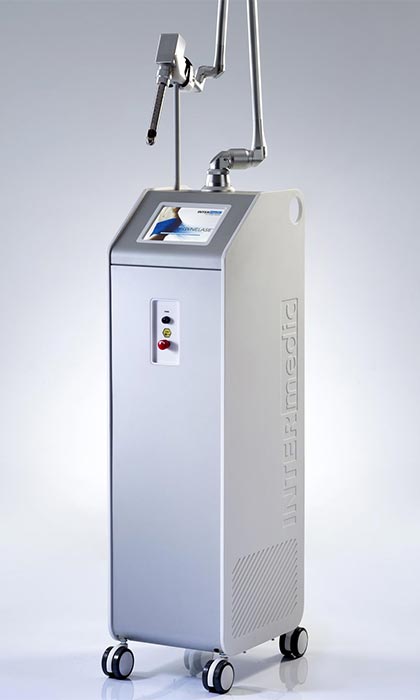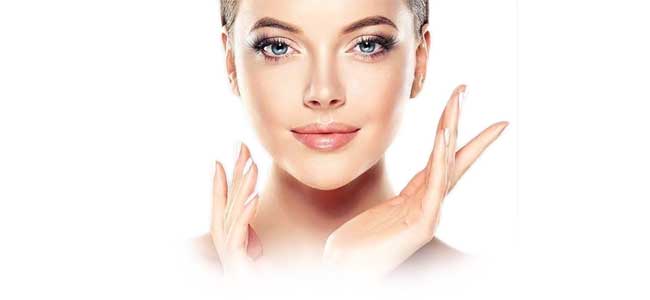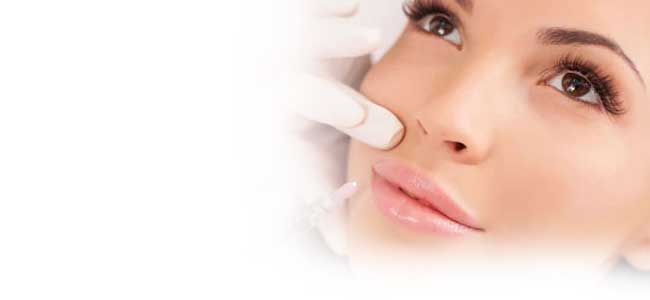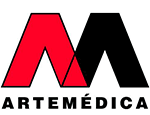Why the CO2 laser?
If the skin shows aging, damage caused by solar exposure, stretch lines, scars, etc., resurfacing with the CO2 laser is the most effective and complete aesthetic medical option, since it globally treats all the signs of aging.
Artemédica has one of the best CO2 lasers available on the market: Gynelase. It is subtle, versatile and effective in application to a broad range of conditions.

The CO2 laser in aesthetic medicine
What is the CO2 laser used for in aesthetic medicine?
- Skin resurfacing
- Facial rejuvenating, treatment of skin chronoaging and photodamage
- Elimination of wrinkles
- Vaporization of benign lesions and lentigo
- Blepharoplasty without surgery and a complement to surgical blepharoplasty
- Treatment of bags and wrinkles of the lower eyelid
- Treatment of perioral wrinkles ("bar code")
- Treatment of periocular wrinkles ("crow's feet")
- Treatment of stretch lines
- Treatment of scars, especially due to acne
- Actinic keratosis
- Rejuvenating of the hands
- Rejuvenating of the neckline
The CO2 laser is by far the resurfacing technique offering the best results in aesthetic medicine.
It is currently the antiaging treatment providing the best aesthetic outcomes (i.e., the gold standard).
The new skin layer following resurfacing has a much more uniform colour and texture, and the newly formed collagen provides firmness and tension. This is why the resurfacing technique is also known as lifting without surgery.

How the CO2 laser works in aesthetic medicine
In aesthetic medicine, the CO2 laser basically works through two of its three mechanisms of action:
- Regeneration: the essence of its action, tissue ablation stimulates the formation and regeneration of new healthy tissue
- Vaporization:, literally the transformation of tissue into water vapor
Regeneration. The basis of skin resurfacing.
Water is the chromophore or target of the CO2 laser and is an abundant component of the skin. The laser energy causes controlled thermal damage when absorbed by the skin. The heat is transmitted to the deeper layers, where heating of the collagen fibers causes the latter to contract, with the stimulation of new fiber formation.
The therapeutic effect of the controlled thermal damage to the skin results in the formation of a new and fully repaired epithelium, with improved quality of the dermis, where the formation of new collagen affords a younger, fresh, terse and bright skin. Moreover, the repair activity of the fibroblasts during the healing phase produces stretching of the skin, which undergoes compacting, firming and alignment, resulting in more youthful characteristics.
Vaporization. Elimination of raised lesions, lentigo, etc.
The ablation effect of the CO2 laser eliminates the tissue layers through vaporization or their transformation into water vapor. This makes the laser ideal for eliminating raised lesions on the skin, such as warts, acrochordons, seborrheic keratosis, xanthelasmas, or any other benign dermatological lesions that may be located anywhere on the skin.

How is the CO2 laser used in aesthetic medicine?
The CO2 laser in aesthetic medicine is used on an ambulatory basis in the clinic, with only topical anaesthesia in the form of a cream.
After cleaning the skin with antiseptic, the laser is repeatedly triggered as it is moved over the skin surface.
The duration of the treatment in areas such as the neckline or abdomen is about 20-30 minutes. In smaller zones such as the lips (perioral or "bar code" wrinkles) or around the eyes ("crow's feet"), the duration is much shorter.
Following treatment, the skin appears reddened, with an itching sensation similar to that of a sunburn.
The skin recovery and regeneration period may vary depending on the treatment parameters used, and during this period optimum dermatological care is required.
After this time, the treated skin has been fully replaced.
Skin resurfacing
The CO2 laser is by definition an ablative laser, i.e. it is a laser capable of removing layers of skin in a controlled manner in order to stimulate the formation of new skin, a skin resurfacing.
What effects does resurfacing have on the skin?
The skin is renewed in its entirety and therefore treats all signs of ageing by making wrinkles disappear or be reduced to a minimum, and the same applies to blemishes, sun spots, keratosis, telangiectasias, stretch marks and sagging skin.
Similar to peelings, in addition to an aesthetic effect, facial resurfacing has a powerful therapeutic effect, as the removal of aged skin eliminates lesions caused by accumulated sun damage, many of them premalignant lesions such as actinic keratoses.
Non-ablative fractional resurfacing
There is a new modality of non-ablative fractional mode resurfacing.
It works in the same way as ablative resurfacing but with less thermal damage and therefore immediate recovery.
It has emerged as an excellent resource for those who wish to have resurfacing but do not have the option of a recovery period. On the other hand, the effects on the skin are also milder, so more sessions will be necessary.
Currently only available in 6 centres in Spain, Artemédica is one of the clinics where you can find this technology.
Frequently asked questions
In a way similar to what occurs in peelings, the laser not only offers an aesthetic facial resurfacing effect but also exerts potent therapeutic action. In effect, elimination of the aged skin also eliminates the lesions caused by accumulated solar exposure damage, many of which are premalignant, such as actinic keratosis.
If fractionated ablative resurfacing is performed (currently the technique of choice), the number of sessions depends on the intensity of the parameters used, though in general we would need at least two sessions spaced at least 6 weeks apart.
In the case of the latest fractionated but non-ablative CO2 laser technology, more sessions would be needed.
The effects obtained from that time onwards are permanent.
Such temporary discomfort is undoubtedly compensated by the spectacular results and the skin rejuvenating achieved. In two weeks the skin appears young and bright. In any case, we have the alternative of fractionated but non-ablative resurfacing in which more sessions are required but there is no recovery phase.
For example, the traditional ablative mode is used for "bar code" wrinkles and other strongly marked wrinkles. The fractionated mode is effective in application to skin showing photoaging and superficial and deep wrinkles, and softens expression lines and acne scars.
Related treatments

Treatment with neuromodulators
This is the first-choice treatment for expression lines. The treatment provides a sensation of facial rest, freshness and good mood.
It is the most commonly used aesthetic medical treatment worldwide.

Hyaluronic acid: lips
Lip fillers can have many more purposes than simply giving volume: moisturising, restoring the profile, repositioning a corner of the mouth that tends to droop, or correcting wrinkles.
It beautifies one of the most visible areas of our face, the lips.
Come to Artemedica, facial aesthetic medicine centre in Murcia.
If you want a toned and luminous face, with elastic and smooth skin, contact us so that we can carry out a diagnosis and propose the most effective facial aesthetic medicine treatment for you.




